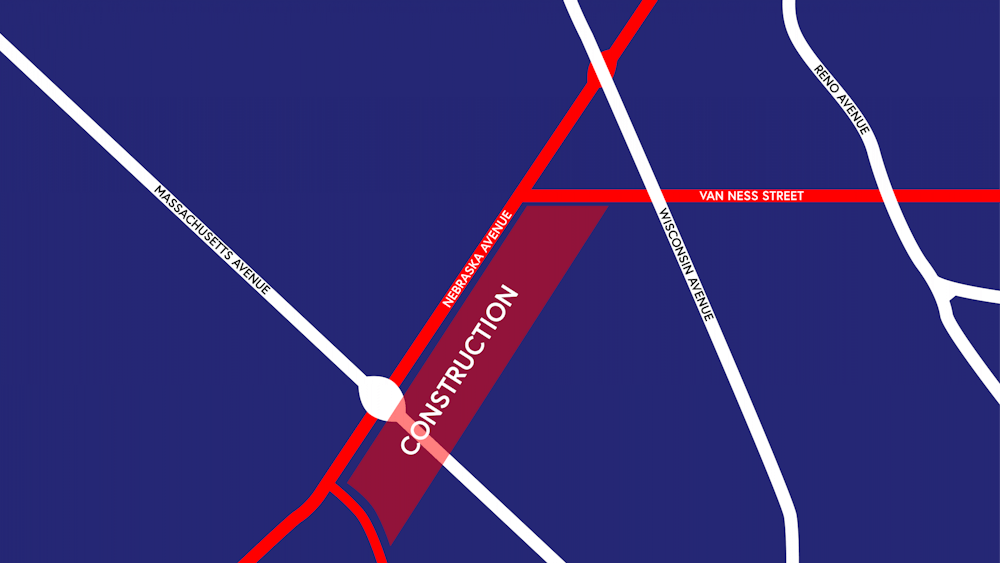The sidewalk between American University’s main campus and Tenleytown will soon nearly double in width as part of a project to widen the pathway on the west side of Nebraska Avenue by up to four feet.
The expansion, which is expected to get underway this week, is being led by the District Department of Transportation and is expected to be complete by mid-May. DDOT announced the project in mid-March following years of advocacy from Advisory Neighborhood Commission 3D. AU also supported the project and similar pedestrian safety measures in its 2021 Campus Plan.
For now, only the west side of Nebraska Avenue between New Mexico Avenue and Van Ness Street is getting a makeover. But plans to build wider sidewalks in other places around AU’s campus are in the works, as the city looks to fulfill its pledges to make transportation safer and more efficient. City officials laid out their vision last year in a plan called moveDC.
German Vigil, a spokesperson for DDOT, said the current project will be completed by the contracting company Capitol Paving of D.C. Vigil estimated the cost to be around $280,000.
ANC 3D Commissioner Christian Damiana, who represents AU students and has advocated for the expansion since taking office in 2021, said the new sidewalk will be a significant improvement over what is currently “an unsafe situation for everybody involved.”
With the current Nebraska Avenue sidewalk layout, cyclists are often forced onto the road, where there is no bike lane. “The drivers on Nebraska Avenue are going far too fast, and they often disregard traffic laws,” Damiana said.
The new sidewalk, which DDOT called a “10-foot multiuse trail” in its Notice of Intent, aims to protect cyclists and pedestrians by creating enough space for both to coexist alongside the road rather than on it.
Pedestrian safety around AU took on a renewed urgency in 2018 after Kenneth Clarke, a freshman in the School of International Service, was struck and killed by a car in Friendship Heights. While Damiana said the sidewalk expansion was not directly tied to that incident, he said it reinforced why this project and others like it are important.
“It does point to a larger issue of the District of Columbia not doing enough to keep its residents safe,” Damiana said. “Especially students.”




